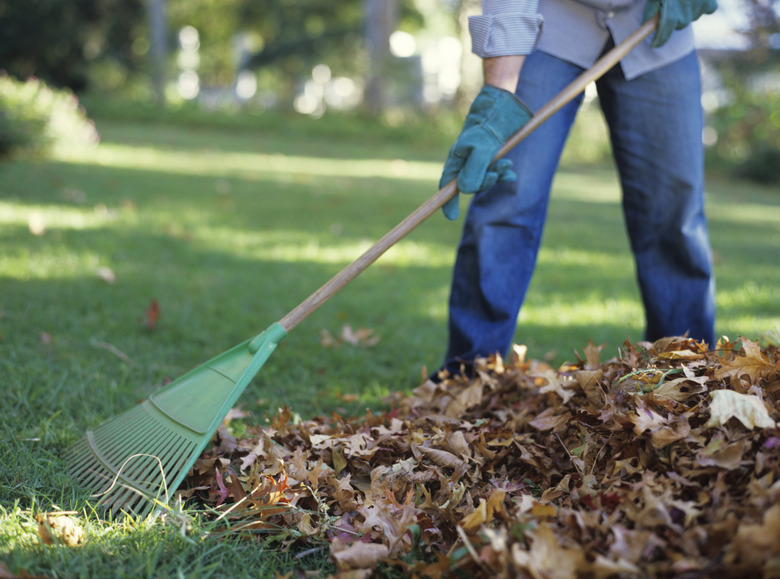How To Make Dead Leaves Decompose Faster
Leaf compost, better known as leaf mold, supplies a soil amendment that improves soil texture, helps retain moisture, and provides a welcome environment for worms and beneficial soil microbes. Even better, it's a free resource if you have deciduous trees that drop a lot of fall leaves. Leaves usually take 6 to 12 months to break down into compost on their own because they don't contain the nitrogen necessary to speed the composting process. You can shorten that time to a few months if you build and tend your leaf compost pile properly.
Step 1
Step 1
Spread the dry leaves out in a 1- to 2-inch-thick layer. Mow over them with a lawn mower to shred the leaves. Collect the shredded leaves in the lawn mower bag, or rake them into a pile after shredding. Smaller pieces of leaves break down more quickly.
- Leaf compost, better known as leaf mold, supplies a soil amendment that improves soil texture, helps retain moisture, and provides a welcome environment for worms and beneficial soil microbes.
- Even better, it's a free resource if you have deciduous trees that drop a lot of fall leaves.
Step 2
Step 2
Place the pile of leaves in a partially shaded, out-of-the-way area of your yard. Make the pile at least 3 feet square and about 3 feet tall. Alternatively, place the leaves in a compost bin of this size.
Step 3
Step 3
Mist the leaves with water until they are damp. Mix the leaves with a garden fork so the pile is moistened evenly throughout. Continue to water the pile so it doesn't dry out, because dry leaves compost very slowly. Squeeze a handful of leaves to verify moisture. If a few droplets of water squeeze out, the leaves don't require water.
- Place the pile of leaves in a partially shaded, out-of-the-way area of your yard.
- If a few droplets of water squeeze out, the leaves don't require water.
Step 4
Step 4
Cover the pile with a tarp to help conserve the moisture during dry periods. Remove the tarp only when turning or adding more moisture to the pile.
Step 5
Step 5
Turn the leaf pile every two to three weeks with a garden fork, moving the leaves in the interior of the pile to the outside of the pile. Frequent turning speeds up composting by keeping the moisture evenly distributed, providing aeration, and helping all the leaves break down at an equal speed.
Tip
If you don't have room for a compost pile, place the shredded leaves in a heavy-duty garbage bag with holes poked in it for air and drainage. Shake the bag every few weeks instead of turning the pile.
Things Needed
- Lawn mower
- Rake
- Garden fork
